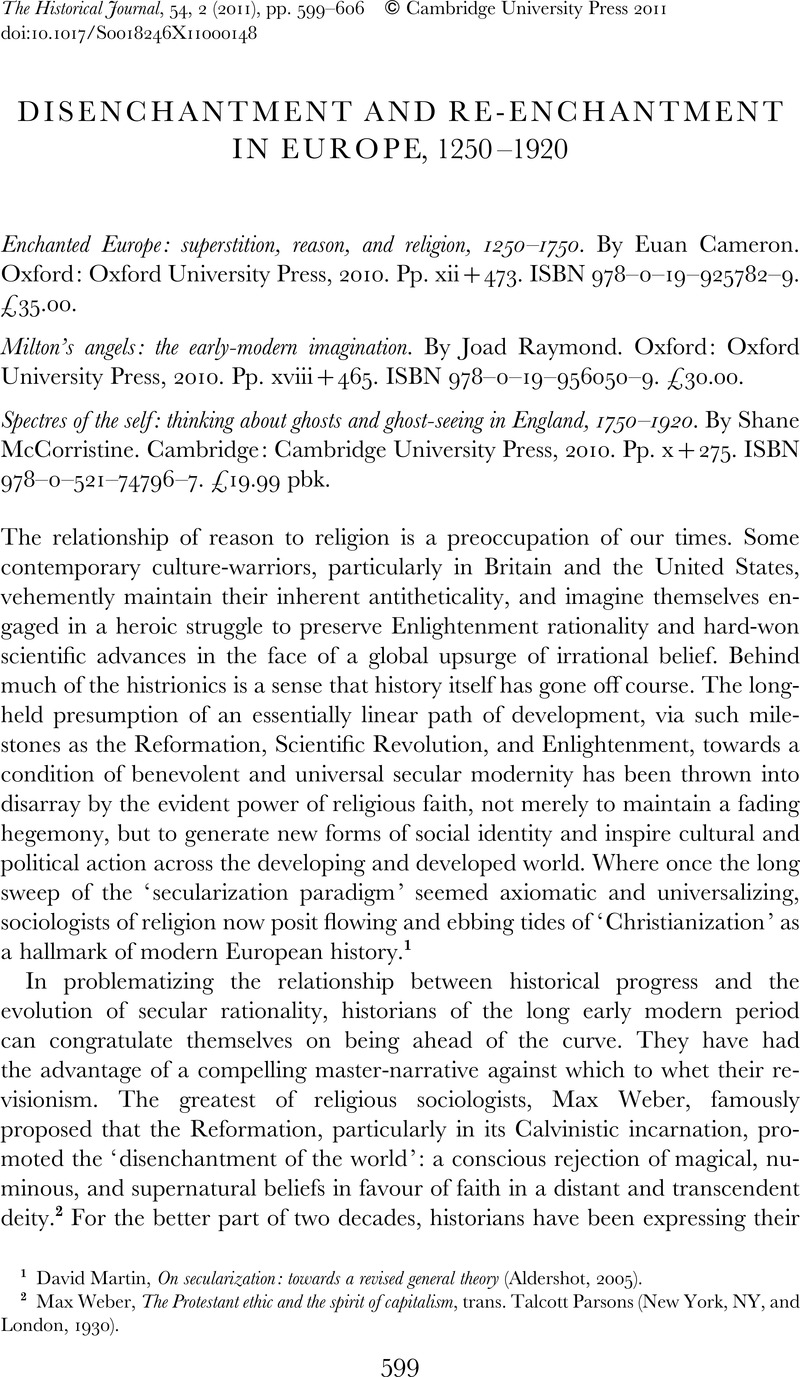Published online by Cambridge University Press: 11 May 2011

1 David Martin, On secularization: towards a revised general theory (Aldershot, 2005).
2 Max Weber, The Protestant ethic and the spirit of capitalism, trans. Talcott Parsons (New York, NY, and London, 1930).
3 Stuart Clark, Thinking with demons: the idea of witchcraft in early modern Europe (Oxford, 1997); Alexandra Walsham, Providence in early modern England (Oxford, 1999); Scribner, Bob, ‘The Reformation, popular magic, and the “disenchantment of the world”’, Journal of Interdisciplinary History, 23, (1993), pp. 475–94CrossRefGoogle Scholar.
4 See in particular Owen Davies, The haunted: a social history of ghosts (Basingstoke, 2007); Sasha Handley, Visions of an unseen world: ghost beliefs and ghost stories in eighteenth-century England (London, 2007).
5 Michel Foucault, The politics of truth, ed. Sylvere Lotringer (Los Angeles, CA, 2007), p. 110.